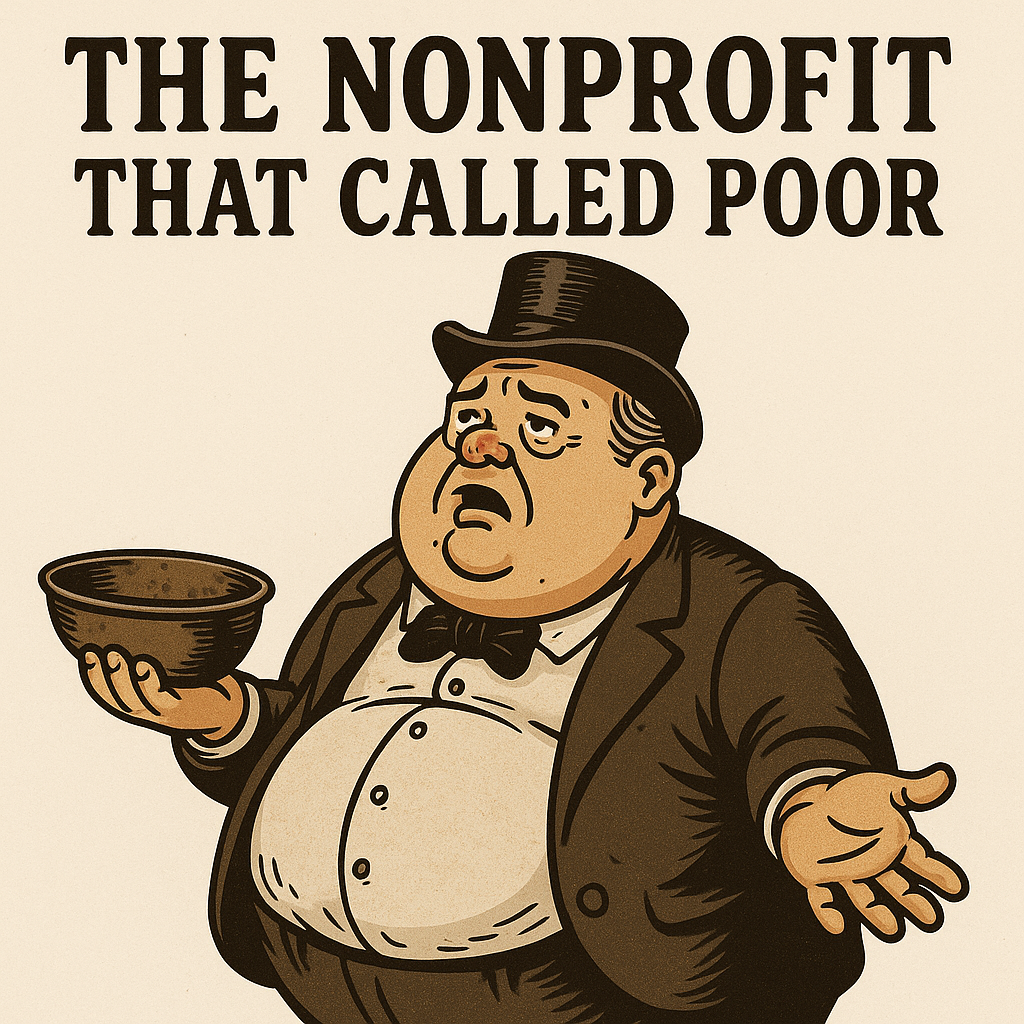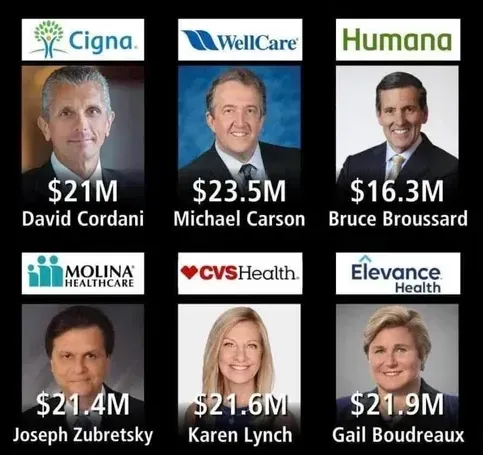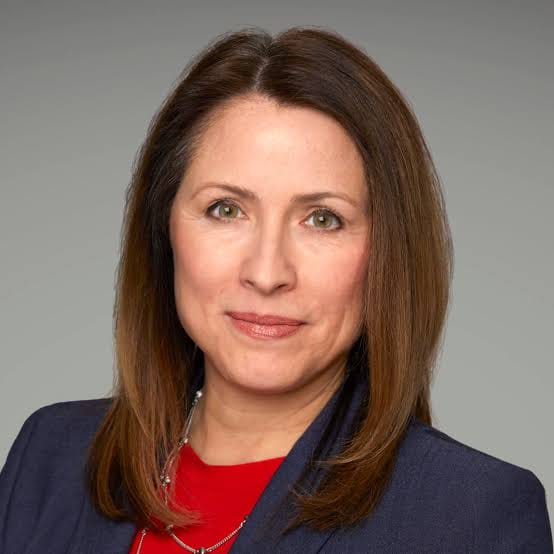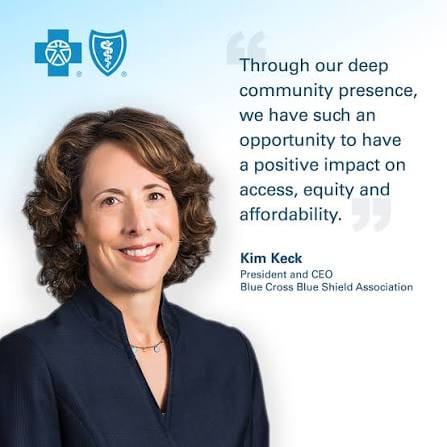THE NONPROFIT THAT CALLED POOR: HOW “NONPROFIT” INSURERS GREW INTO PARASITES THAT FEED ON THE SICK (And who the biggest culprits are)

By Matt Stone | The Grounded Newsroots
Truth with roots. No bullshit. One hundred dollars if I get something wrong.
Most people hear the word “nonprofit” and imagine something noble.
They picture charity.
Service.
Humanity.
A mission bigger than money.
But in American health insurance, “nonprofit” has mutated into a mask.
A disguise.
A polished label that lets these corporations hide a darker truth. The truth that they do not contribute to society at all.
They only know how to take and hoard. The for-profit CEOs are bad enough.

They essentially function like parasites.
They attach themselves to the public.
They feed on our premiums.
They drain resources from families already stretched thin.
And then they call themselves benevolent.
A real nonprofit creates value for the community.
These insurers extract value from the community.
The difference between the two is enormous, but the public seldom sees it.
So let us shine a light.
THE PARASITE MODEL: HIDING WEALTH WHILE DRAINING THE HOST
Every insurer is required to keep a reserve.
It is logical.
Crises happen.
Pandemics happen.
Unexpected claims arise.
But what many nonprofit insurers do is something else.
They sit on reserves far beyond what they need.
They hoard.
They stockpile.
They accumulate so much unused wealth that entire states could run their Medicaid program for years on the cash these companies are hiding.
Some nonprofits have two times the required reserves.
Some have three times.
Some have more money stashed than the entire state budget.
And every year they cry poor.
Every year they raise premiums.
Every year they claim they are on the brink.
It is the same behavior you see in parasitic species.
They gorge.
They store.
They weaken the host.
Then they demand more nourishment.
The sicker the community becomes, the stronger the parasite grows.
THE EXECUTIVE BELLY: MILLIONAIRE PAY PACKAGES IN A “NONPROFIT” WORLD
Parasites do not spread energy equally.
The host gets weaker.
The center of the parasite grows fatter.
That pattern holds here too.
While the public rations medication, skips dental care, and crowds emergency rooms, the executives of these nonprofit insurance companies enjoy:
• million dollar salaries
• bonuses tied to cost-cutting
• perks disguised as “leadership compensation”
• financial incentives for denying claims
Some of these nonprofit CEOs make more money than the heads of major for-profit corporations.
All while presiding over an organization that does not pay taxes because it claims to exist for the public good.
Let's address the top five biggest parasites in the United States.
1. Maurice Smith, CEO, Health Care Service Corporation (HCSC)

Maurice Smith runs Health Care Service Corporation, the nonprofit parent of Blue Cross Blue Shield plans in Illinois, Texas, Oklahoma, New Mexico, and Montana. In 2023, his total compensation hit about 28 million dollars, a 26 percent raise over the previous year, which made him one of the highest paid health insurance CEOs in the country and the top earner among nonprofit insurers.
HCSC is structured as a member-owned nonprofit, yet it behaves like a national corporate giant: multistate reach, very large reserves, and aggressive executive pay while members still face rising premiums and the usual fights over coverage. Smith is the perfect example of your parasite metaphor. The organization enjoys nonprofit status and public goodwill, while the person at the top earns a Wall Street package in a system that tells the public there is no room to lower costs.
2. Dana Erickson, CEO, Blue Cross and Blue Shield of Minnesota

Dana Erickson leads Minnesota’s largest nonprofit health insurer. In 2024, her total compensation reached 4.3 million dollars, a jump of roughly 34 percent in a single year, driven largely by bonuses. During that same reporting period, Blue Cross Minnesota posted operating income of only 27.6 million dollars on 16.5 billion dollars in revenue, a margin under one percent.
So the nonprofit is basically scraping by on paper, but the CEO’s pay rockets upward while members still deal with premium hikes and cost pressure. That mismatch is why Erickson is suspect. It looks like a classic pattern where the “host” is told times are tight while the leadership quietly fattens its own cut.
3. Brian Pieninck & Successors, BlueCross BlueShield Maryland

CareFirst BlueCross BlueShield is a nonprofit insurer that dominates Maryland and the Washington, D.C. region, with about 75 percent of Maryland’s market and millions of covered lives. Over the years, regulators and advocates have repeatedly scrutinized CareFirst for its surplus levels and its attempts to behave more like a for-profit company. Maryland’s insurance commissioner previously ordered an audit of CareFirst’s reserves when its surplus was estimated at around 1.7 billion dollars, specifically to determine whether a nonprofit holding that much was reasonable.
CareFirst leadership has also been involved in a long saga over failed attempts to convert the plan to for-profit status and sell it, which regulators blocked as not being in the public interest. Outwardly, CareFirst now celebrates itself as one of the “World’s Most Ethical Companies” under CEO Brian Pieninck, who led the company from 2018 and chaired the Blue Cross Blue Shield Association board before moving on to lead Florida Blue’s parent company in 2025. The history of huge surpluses, regulatory concern, and attempted conversion makes CareFirst a prime example of a nonprofit that has long danced on the edge between mission and money. With a clear preference for the latter.
4. Kim Keck, CEO, Blue Cross Blue Shield Association (BCBSA)

Kim Keck is president and CEO of the Blue Cross Blue Shield Association, the national umbrella that coordinates and brands independent Blue plans across the country. She took the role in 2021 after leading Blue Cross Blue Shield of Rhode Island. According to IRS filings compiled by ProPublica’s Nonprofit Explorer, Keck received total compensation reported in the range of 3.9 to 4.3 million dollars in recent years for running the association.
The association itself reported revenue of around 813 million dollars in fiscal 2023 and employs roughly 1,000 to 1,200 people, putting it closer to a national trade group and policy machine than a humble nonprofit. Keck’s role is important in this story because BCBSA sets tone and standards for all the Blue plans, many of which are nonprofits with large reserves, rising premiums, and well-paid executives. When the person running the whole Blue ecosystem takes home millions, it reinforces the sense that the nonprofit shield protects a powerful, well-fed network that is not living hand-to-mouth like the people paying the premiums.
5. Andrew Witty, Former CEO, UnitedHealth Group

Andrew Witty is not a nonprofit CEO, but he is the architect of a playbook that nonprofit insurers copy. Under his leadership, UnitedHealth Group’s annual revenue climbed above 400 billion dollars, making it the largest health insurer in the world. His 2024 compensation package was reported at around 26.3 million dollars before he abruptly resigned in 2025 amid a storm of challenges facing the company.
UnitedHealth has been accused in investigations and lawsuits of using algorithms to help deny or cut short care for Medicare Advantage patients, pressuring staff to follow AI-driven tools that recommended ending rehab stays even when clinicians believed patients still needed treatment. That mix of massive revenue, very high executive pay, and algorithmic denial of care is exactly what makes Witty relevant to your piece. Nonprofit insurers often mirror the same utilization management tactics, prior authorization barriers, and cost control strategies, but with the added halo of “nonprofit” on top.
Imagine a parasite that gains a new organ every time the host loses blood.
That is what these executive packages represent.
It is not charity.
It is extraction.
PREMIUM HIKES: THE PARASITE ASKS THE HOST FOR MORE

Here is the final insult.
Even with billions hoarded in reserves, nonprofit insurers return every year with the same script.
“We need to raise premiums.”
“We are facing financial pressure.”
“We are doing this to protect the system.”
The host gets weaker.
The parasite gets stronger.
Every premium increase is a feeding cycle.
Every denial is a feeding mechanism.
Every restriction placed on coverage is a way to keep more nutrients inside the parasite’s body.
The CIA was created to track the Soviets and deliver intelligence straight to the president and Congress. Every year the threat looked bigger on paper and the agency asked for more money. More analysts. More covert programs. More reach.
Then something strange happened.
When the Soviet Union collapsed, you would expect the CIA’s mission to be complete. The enemy it was built to fight no longer existed. The Cold War was over.
But the very next year, the CIA requested a 12 percent budget increase.
Why?
Because once a mission ends, the mission changes.
An institution’s first instinct is not to dissolve.
It is to survive.
When the threat disappears, the organization invents a new one.
When the job is done, it redefines the job.
The priority is no longer the good of the country or the good of the people.
It becomes the good of the institution.
This is the pattern across Washington.
This is how bureaucracies metastasize.
This is how agencies built for national defense turn inward and start protecting themselves instead.
Mission accomplished becomes mission extended.
Mission extended becomes mission eternal.
Because in the end, the one thing a powerful institution will never allow to die… is itself.
If you pay premiums, you are the host.
If you get denied care, you are the host.
If you have ever had to choose between groceries and your medication, you are the host.
And the parasite thrives because you do not.
THE POLITICAL LEECH: HOW NONPROFITS INFLUENCE POLICY TO PROTECT THEMSELVES
Even though they avoid taxes, these insurers still pour money into politics through:
• PACs
• lobbying networks
• “educational” nonprofits
• political consulting firms disguised as charities
• shadow groups that shape policy without public oversight
The parasite not only feeds on the host.
It rewires the host’s brain.
It influences legislation.
It secures favorable regulations.
It blocks reforms that threaten its feeding cycle.
It funds candidates who will keep the public confused and the system unchanged.
Real nonprofits try to serve the public.
These organizations try to shape the public into a resource they can exploit.
REAL PEOPLE, REAL CONSEQUENCES: HOW THE HOST SUFFERS
Here is the part that matters.
You cannot see the parasite.
You feel it.
You feel it when the pharmacy tells you your medication is not covered.
You feel it when you read about someone dying while waiting for approval.
You feel it when you skip a test because the deductible is too high.
You feel it when a denial letter shows up with phrases like “not medically necessary.”
Meanwhile, the executives grow richer.
The reserves grow deeper.
The nonprofit grows more politically protected.
Parasites do not have empathy.
They do not care if the host is hurting.
They care only about continued access to the bloodstream.
These nonprofit insurers operate the same way.
THIS IS WHY THE GROUNDED EXISTS
People are told to trust these companies because they are nonprofits.
The word alone disables our instincts.
We expect service.
We expect compassion.
We expect fairness.
But a parasite with a halo is still a parasite.
A predator with paperwork is still a predator.
If there is a nonprofit insurer in your state that needs investigation, tell me.
If you work inside one and want to expose the truth, message me privately.
If you were denied care, share your story.
I strive to be the biggest problem possible for people who hide greed behind charity language.
And I will dig until the mask cracks.
Until the reserves are exposed.
Until the feeding cycle is mapped.
Until the public sees the parasite for what it is.
Let us shine a light deep enough to reach the roots.
Let us make the unseen visible.
Let us protect the host.
Works Cited
Blue Cross Blue Shield Association. “Form 990: Return of Organization Exempt from Income Tax.” IRS Nonprofit Explorer. ProPublica. Accessed 2025. https://projects.propublica.org/nonprofits/
CareFirst BlueCross BlueShield. “Annual Report and Financial Statements.” CareFirst Corporate Publications. Accessed 2024. https://www.carefirst.com
Centers for Medicare and Medicaid Services. “Medicare Advantage Denial Patterns and Utilization Management Oversight.” CMS Interoperability and Prior Authorization Final Rule, 2023.
Health Care Service Corporation (HCSC). “Annual Report.” HCSC Corporate Site. Accessed 2024. https://www.hcsc.com.
Illinois Department of Insurance. “Health Care Service Corporation: Financial Examination Report.” Illinois DOI, 2023.
KFF (Kaiser Family Foundation). “Health Insurer Financial Performance and Reserves.” KFF Health System Tracker, 2023–2024. https://www.healthsystemtracker.org.
Minnesota Department of Commerce. “Blue Cross and Blue Shield of Minnesota: Financial Statement and Executive Compensation Report.” State of Minnesota, 2024.
Modern Healthcare. Bannow, Tara. “Health Insurer Executive Pay Surged in 2023.” Modern Healthcare, 2024. https://www.modernhealthcare.com.
ProPublica. Ely, Ash and Jameelah, Tari. “The Nonprofit Pay Database: Health Insurance Executives.” ProPublica, 2023–2025. https://projects.propublica.org/nonprofits/.
UnitedHealth Group. “Annual Report and Shareholder Filing (Form 10-K).” UHG Investor Relations. Accessed 2024. https://www.unitedhealthgroup.com.
Wall Street Journal. Mathews, Anna Wilde. “UnitedHealth Accused of Using Algorithms to Wrongly Cut Off Care.” Wall Street Journal, November 2023.
Washington Post. Goldstein, Amy. “Medicare Advantage Insurers Deny Millions of Claims Annually.” Washington Post, 2024.


Comments ()